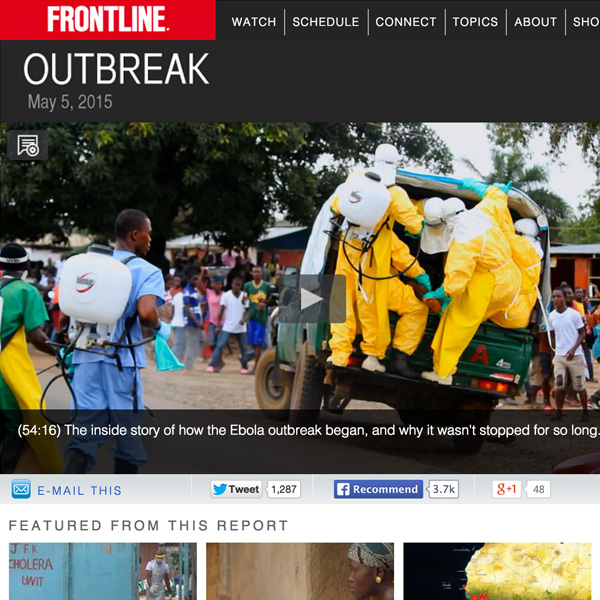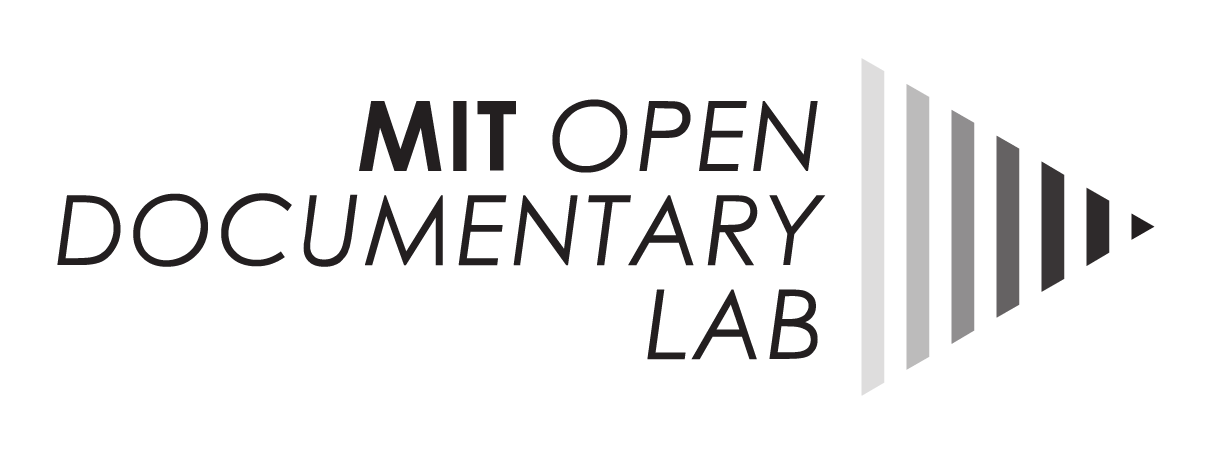
15 May On the Front Lines of the Virtual Frontier | Jeff Soyk
On the Front Lines of the Virtual Frontier
By Jeff Soyk
We had the pleasure of hearing from ODL fellow Raney Aronson of Frontline. She shared insight on the current integration of “interactive” media into Frontline’s offering. The following is a summary and response to her presentation.
As soon as journalism-based media was able to go online, Frontline was right there with streaming media. Now they’re expanding upon their digital offering as they look to explore cross-platform storytelling, immersive web-based experiences, online tools and data visualizations, and virtual reality. As Raney mentioned, the change has already happened and continues to happen, which Frontline is embracing as this type of media gets increasingly more distribution.
Currently, Raney feels that online videos are often restrained by the player in which they live. She’s noticed this with some of their work at Frontline, but sees opportunity in building upon it and pursuing new approaches. These approaches include, but are not limited to, social media strategies, mobile-based apps, data-driven tools (e.g. Ballot Watch), web-based experiences (e.g. Web of Terror), and new technologies such as virtual reality. She posed the question, “How can we use partnerships and new technologies to help us tell stories better?” I agree that partnerships are incredibly important, not only from a distribution and outreach standpoint, but from a collaborative standpoint when it comes to creating and delivering media in an efficient, effective, and meaningful way.
In regards to collaboration, Raney points out that merging broadcast workflows with web-based workflows is a unique challenge. It’s especially tough with investigative journalism—it’s difficult to build an interactive around something that’s constantly changing and which is investigative. I find this is very much the case for i-doc work as well. Making a tech decision at an early phase that influences how a story is captured or presented versus seeing how an unfolding story influences what tech is best suited to tell that story, can often be a balancing act.
Additionally, team-based infrastructures vary greatly between traditional broadcast/film and interactive. I experience this myself and am always considering ways in which we can improve process models and collaboration tactics when assembling a diverse team of individuals with conflicting workflow practices. It’s bad enough that industry terms sometimes have opposite meanings depending on the field (e.g. the term “development” in regards to project phases). And as Raney mentioned, with interactive it’s important to understand that a framework is being created, and changing things last minute has different implications than with broadcast.
Interactive is also a living, breathing thing, which requires monitoring and updates over time. This may seem like an obvious reality, but the lack of preparation for this is something I personally run into all the time. And it’s not only important to consider from a maintenance perspective, but from a storytelling perspective as well.
As mentioned, Frontline has jumped on the opportunity to explore storytelling through virtual reality, as it has become an emerging technology receiving a great deal of attention. Raney showcased some of their work in progress for a project addressing the Ebola outbreak, which was very compelling and exciting to see.
There are certainly many UX challenges when it comes to storytelling through VR, but it’s clear Raney is keeping a close eye on narrative and takeaway—she mentioned the potential use of a “ripple effect” approach where interactions can generate an impact that spreads and affects content elsewhere in the experience.
Although I have some overarching concerns when it comes to VR, I still believe it has the ability to be a very powerful and useful tool (I relate to cons brought up by Oculus founder Palmer Luckey… though in regards to his comments on videos and photographs, I would say videos and pictures are actually quite easily manipulated, even though I get his point). Personally, I’ve had relatively limited exposure to the medium, but plan to check out projects like The Enemy, by ODL’s own Karim Ben Khelifa, as well as The Machine to Be Another, both which catch my attention regarding clever uses of VR.
Overall, I look forward to seeing more of the work created at Frontline. It’s great to see Raney and her team dive into digital and take these initiatives head on. Raney also mentioned that they hope to bring in grad students for in-house training. She finds that there is a new breed of tech-savvy student with a strong passion for modern-day journalism. This is a wonderful idea with the potential for some very rewarding collaboration and innovation at Frontline and in the field of journalism.
Jeff Soyk
Fellow, MIT Open Documentary Lab
Comparative Media Studies/Writing



